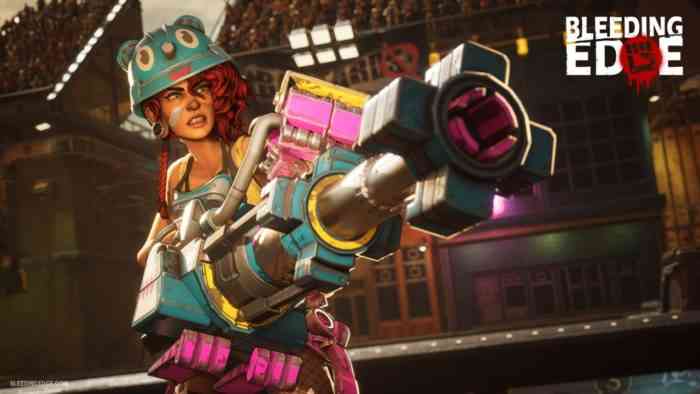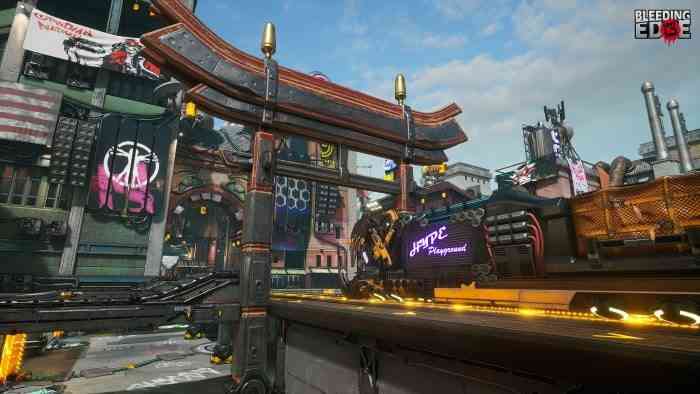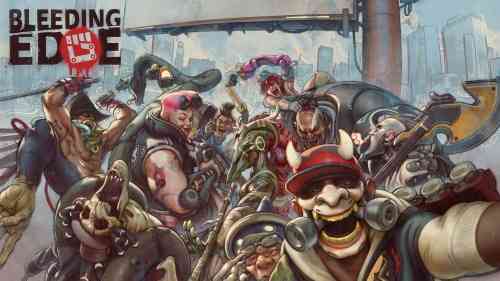Bleeding Edge Review
When Bleeding Edge was first announced, it sounded like a sure-fire winner. Developed exclusively for the Xbox One by Ninja Theory, developers of such amazing must-play games such as Heavenly Sword, Enslaved: Odyssey to the West, and Hellblade: Senua’s Sacrifice. The team at Xbox knew Ninja Theory was so talented, they recently acquired the studio and brought them into the Xbox Game Studios fold. That’s why I was absolutely shocked during my time with Bleeding Edge. It’s awful.
When you begin Bleeding Edge, you’ll watch a brief video that provides a little background lore to the world you’ll be competing in. Essentially, in the future, there are a bunch of people who get cybernetic enhancements and compete in these seemingly deadly games. The games are illegal, so these competitors are complete badasses for participating. Since the game doesn’t feature any sort of single-player campaign, you won’t get much more story aside from some character biographies in the Workshop area.
Prepare For Battle
Bleeding Edge is a 4v4, objective-based multiplayer game that uses a third-person perspective. There are two different types of matches Power Collection and Objective Control. Before each match, you can pick one of 11 characters divided among 3 classes: Damage, Tank and Support. Ideally, your team will have at least one of each class. You can change your character whenever you die, but can’t select a character that another teammate is using. Between matches, you’ll have the chance to tweak the various characters with mods and skins. Each character has a basic attack mode, the ability to evade, three special moves and one really special move. Finding a character that suits your play-style will be ideal, but make sure you practice with other characters just in case you’re too slow picking at the beginning of the match.

Once you click Fight on the title screen, you’ll be randomly placed in the next available game. Unfortunately, this means you can’t pick and choose between the two modes. In the Power Collection mode, the match cycles between the Collection phase, where you collect Power Cells, and the Delivery Phase, where you deposit Power Cells. The first team to get the required number of Power Cells wins. In my opinion, this mode would be better if it ditched the phases and simply allowed both collection and delivery at the same time – it would create a more hectic pace without the ridiculous lulls in the action. In the Objective Control mode, there are three control points on the map that will randomly turn on, which you must control to earn points. It’s sort of like a cross between Hardpoint and Domination from the Call of Duty franchise. You’ll also earn points for killing enemy players – which I found most other competitors focused on. I believe this mode would have been substantially better if the three control points were always on. Teamwork is essential in these games, but rarely did I find other players putting in the effort to actually focus on objectives. It’s a frustrating reality of some online games, but somehow seemed even worse with Bleeding Edge.
Train For Battle
Bleeding Edge features a couple of additional modes to help you learn the game’s ins and outs. You’ll find a handy tutorial which I highly recommend you complete. Don’t skip the Advanced Tutorial either – there is some must-know info in there. You’ll also find a Dojo where you can compete against computer players to practice. Finally, the Workshop is where you’ll be able to customize and tweak each of the characters. Which brings me to the best part of Bleeding Edge, the character design. Each fully-voiced character has a completely unique look and playstyle. Yet, even here, the end result is a bit of a mixed bag. There are some really cool characters like the voodoo-inspired Kulev, and yet, there are some incredibly lame characters like the hacker ZeroCool with his silly “leetspeak”. The game only features four or five maps to compete in, and each map has a very similar look and layout. They each feature a stage trap too, like speeding trains or bombs that drop from the sky. I would hope we’ll see more maps and characters in the coming months – but I won’t hold my breath. The game’s visuals aren’t terrible, but considering this is the same developer that gave us the gorgeous Hellblade: Senua’s Sacrifice, I was a bit disappointed – I had hoped for more.

There really isn’t a lot to like about Bleeding Edge. I found it uninspired and boring with only a couple redeeming qualities such as some neat character designs and a robust tutorial. I honestly don’t understand why Bleeding Edge was developed. Maybe Xbox Game Studios requested their newly acquired Ninja Theory to throw together a quick team-based online game to fill a void until the Xbox Series X launches. Who knows. I imagine we won’t see much post-launch support with Bleeding Edge, as the team at Ninja Theory is probably fully focused on making Senua’s Saga: Hellblade II. At least Bleeding Edge is free with Xbox Game Pass, so if you subscribe, you can give it a go and see for yourself. Maybe you’ll find more redeeming qualities in it than I did – though I doubt it. Ultimately, this is not a game I can recommend playing. Bleeding Edge? More like Painfully Dull.
***Played on Xbox Game Pass***
The Good
- Some cool character designs
- Free on Xbox Game Pass
- Decent tutorial mode
The Bad
- Uninspired game modes
- Boring gameplay
- Short on content
- Visually underwhelming

